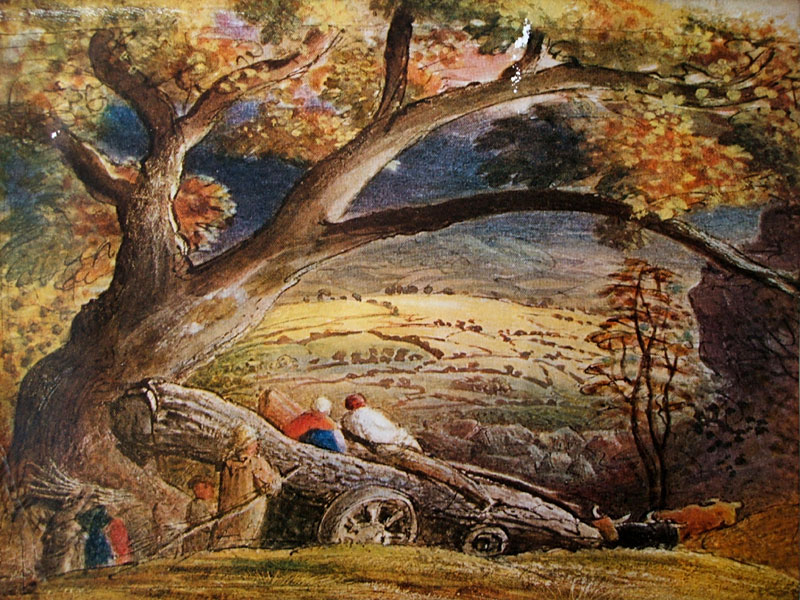.

Landscape near Shoreham: Samuel Palmer (c. 1826-1835)
I surprise myself by how much pleasure I live alone in. Fields where a month ago men bound up their wheat all day, and the harvesters, leaning on their instruments like flagging vines, complained of heat, while hirundines passed across the sky in great assemblies, are now a brown stubble under mist in a cool blue dusk, with sweet moon light all around, while stone-curlews cry late into the fine sharp starlight-tempered evenings.
Hop-picking goes on without interruption, as it continues warm. The whole air of the villages is perfumed by effluvia from the hops drying in the kilns. Is it this aromatic resonance that makes my brain feel pleasantly drowsy when I am on my walks, or when I am alone composing? Night dews, days calm and cloudless. I am alone and not myself, far from home and in a warm situation. The farm women gather in the pear-mains, golden rennets and golden pippins. Sweet days, golden eves, red horizons. Just at the close of day several teams of ducks fly over the cathedral fronts from the forest, headed off probably to find a congenial stream. My chance of immortality is to learn the tune of nature's quiet power.
TC: A Warm Situation, from Junkets on a Sad Planet: Scenes from the Life of John Keats, 1994

Noche de luna llena (Night of the full moon): photo by photo by Luz A. Villa, 2007


Keats's manuscript draft of To Autumn, made in Winchester in the early Fall of 1819. The draft shows the poet, here poised at the calm peak of his swiftly-maturing powers, composing rapidly but also with a propulsive exactitude in his word choices, each stage of working revision indicating a significant forwarding of the poem. The fluid compositional labour appears to have slowed for a regathering of thoughts in the middle stanza, especially in lines 15-16; here the viewer of the working draft, even at this distant remove in time, can almost sense Keats -- who required of his work that one be able to "feel it on the pulse" -- "feeling for" a solution to the problem he has set for himself: that is, to sketch a full, evocative, "inscaped" (to borrow the term of another English poet, Hopkins) "character" of the season. Looking at his manuscript draft up close one may be tempted to make out a hidden poetics of process at work, beckoning to the later reader from within the several wonderfully serendipitous "slips of the pen"; of themselves these seeming mistakes may be fancifully said to create mini-poems: as when the exploring draftsman writes of a recumbent Autumn's "hair soft-lifted by the winnowing wind", and it comes out "winmowing". Is it not possible to see in that alluringly errant holograph line an image of Autumn's hair being both winnowed and mown, as field-grass is, by the gentle breeze?

No comments:
Post a Comment